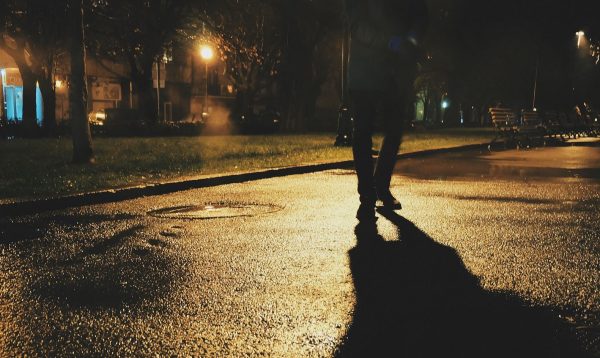90% of the input to our brain is visual; we rely heavily on what we can see to make judgements about how to react. At night, when all colour is gone and objects loom out of the darkness, our brains have to expend more effort to make sense of our surroundings. This makes driving at night more tiring and more challenging. But that’s not the only difficulty with driving at night.
Why is driving at night more difficult?
- Depth perception is worse: It’s much harder to judge the speed and proximity of an approaching vehicle, especially if it has a single point of light like a motorbike’s headlight. It also makes it more difficult to judge braking distances and cornering.
- Animals: some animals are active nocturnally, such as deer and badgers. They are very difficult to see in headlights and can cause a real crash danger for all vehicles, but especially motorcyclists.
- Fatigue: if you’re driving when you would usually be sleeping, you are more at risk of falling asleep at the wheel. Read more about driver fatigue.
- Pedestrians: pedestrians often walk around with dark clothing on and are really difficult to see. You’ll find people on scooters and bikes with no lights and minimal reflectors, so be cautious. On Thursday to Saturday, there are many more drunk pedestrians around, particularly around closing time; distracted pedestrians are a major issue.
- Ice: in winter, ice can form very quickly once the sun has gone down, particularly if there’s been light rain. Keep an eye on your vehicle’s external temperature gauge and take care if it drops below 3 degrees Celsius.
- Being dazzled: vehicles coming towards you (particularly larger ones) can dazzle you and restrict your vision.
- Fewer services open: if you need to stop, there will be fewer petrol stations open.
- Visibility: on an unlit road, full beam lights give good illumination for around 30m ahead of you. It takes just over 1 second to travel 30m at 60mph. High beam lights illuminate around 100m ahead of you on an unlit road.
- Detours: a lot of motorway repair work goes on at night and it’s not uncommon to have to do a detour when a slip road is closed for maintenance.
- Navigation: signs and landmarks are more difficult to see; using a GPS navigation unit can help.
- More drunk drivers: especially on Thursday, Friday and Saturday nights, there are more drivers on the road who are under the influence of alcohol.
- Eye health: as you age, your eyes become less adept at and take longer when adjusting to changes in light. Age-related degeneration such as cataracts and glaucoma can affect vision. Get regular eye health checks. Don’t wear tinted glasses when driving at night.
- Maintaining a consistent speed: many drivers will inadvertently slow down when another vehicle is coming towards them and this can frustrate drivers that are following.
How to improve your night driving experience
- Don’t use the internal light: if a passenger turns on the interior light, it reduces your ability to see outside your vehicle. You should also be able to dim the dashboard lights; this can help reduce eye strain.
- Keep your windows and headlights clean: keeping your headlights clean means you’ll have better illumination. Keeping your windows clean means you can see much better when there are approaching vehicles with lights because the light isn’t diffracted as badly. As there are often more bugs around at night (they are attracted to your headlights), remember to clean them off whenever you stop at a petrol station. Your windows can fog up quickly at night, too, so you’ll need to know how to use your air conditioning. Motorcyclists – there are more flies at night, so have some way of keeping your visor clean.
- Check your lights are working: a blown bulb reduces your visibility.
- Avoid looking at the headlights of approaching vehicles: it can be tempting to look at the lights of an approaching vehicle, but instead, look to the verge. If you look at the headlights you’ll momentarily have much less vision once that vehicle has passed and you are plunged into relative darkness again.
- Use other vehicle’s lights for clues: pay attention to the taillights of the vehicle ahead of you as it will give you clues about the direction of the road. Look for the lights of approaching vehicles to give you a clue as to whether there are crests or dips and which way the road turns. You may even see other hidden road users silhouetted in approaching headlights.
- Adjust your rearview mirror: you should be able to adjust it so that you are not dazzled from vehicles behind you
- Know how to use your high beam headlights: dip your high beam headlights until an approaching car is around 200m away and when you are following another vehicle less than 200m ahead of you; switch your high beam headlights on whenever you can.
- Get plenty of rest before driving: driving fatigued is dangerous.
- Stay visible when stopped: if you have to stop on the side of the road, keep your lights or hazard lights on.
- Anti-reflective eyeglasses: if you have to wear glasses for driving, an anti-reflective coating will be easier on your eyes.

